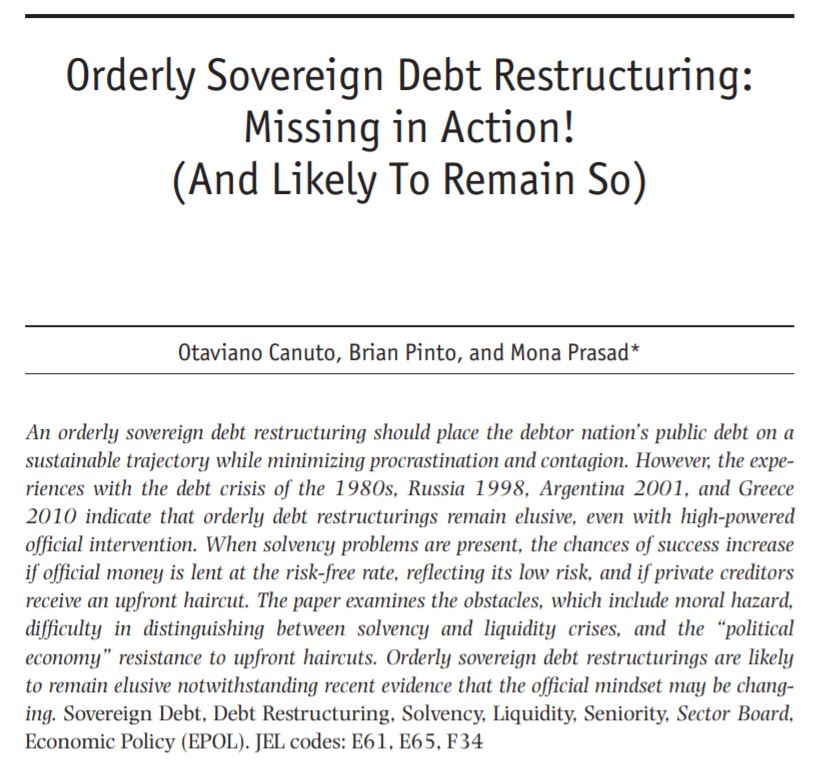An orderly sovereign debt restructuring should place the debtor nation's public debt on a sustainable trajectory while minimizing procrastination and contagion. However, the experiences with the debt crisis of the 1980s, Russia 1998, Argentina 2001, and Greece 2010 indicate that orderly debt restructurings remain elusive, even with high-powered official intervention. When solvency problems are present, the chances of success increase if official money is lent at the risk-free rate, reflecting its low risk, and if private creditors receive an upfront haircut. The paper examines the obstacles, which include moral hazard, difficulty in distinguishing between solvency and liquidity crises, and the “political economy” resistance to upfront haircuts. Orderly sovereign debt restructurings are likely to remain elusive notwithstanding recent evidence that the official mindset may be changing.


